Algeciras, during the early 20th century was the Riviera of the Mediterranean, a new winter resort. Now a busy industrial port and the start of Mr Hendersons Railway
By Nick Nutter | Updated 30 Aug 2022 | Cádiz | Villages |
Login to add to YOUR Favourites or Read Later
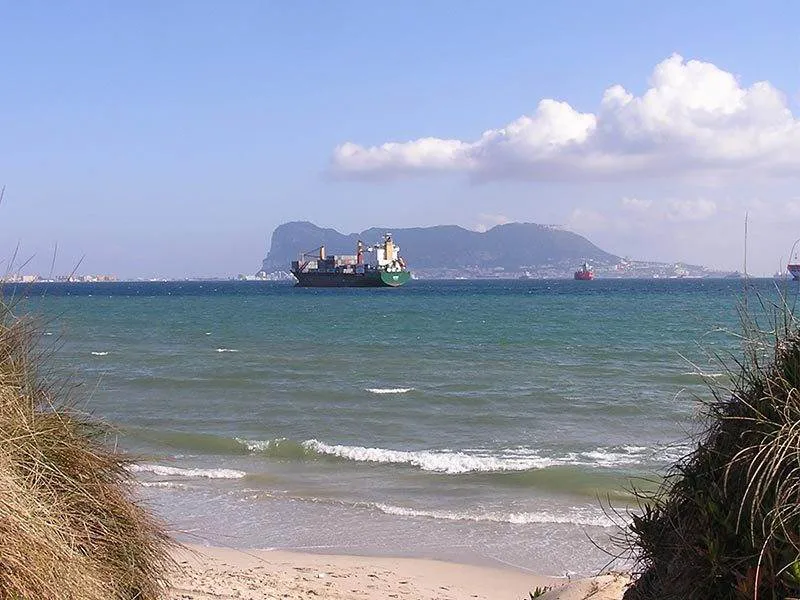
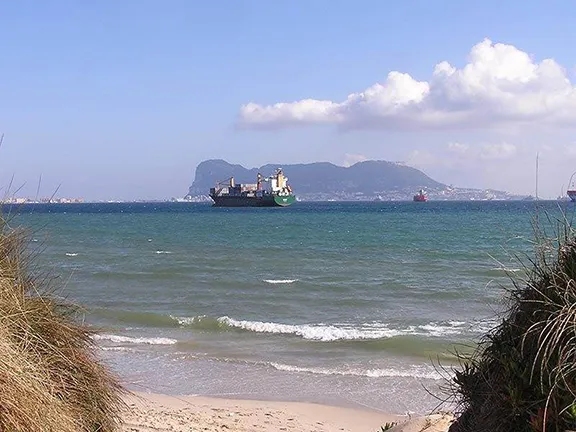
View of Gibraltar from Rinconcillo Beach Algeciras
Standing on the steps of the Reina Cristina hotel, looking at Algeciras today it is hard to imagine that this city, in 1900, was the ‘New Winter Resort’. A new hotel, the Reina Cristina behind, sat amongst manicured lawns overlooking a headland dotted with villas in the ‘Queen Anne’ style with chimneys and pitched roofs. They were a complete contrast to the few, white painted, fisherman’s cottages that formed the ‘old’ part of town. There is a single wooden pier on the Rio de la Miel, the southernmost river in Europe, that flows into the 5 kilometres long sweep of sandy beach fronting the Bay of Gibraltar. A steam ferry, the Elvira, nestles alongside the pier discharging its passengers into a waiting railway coach that will transport them to the railway station and from there to Ronda or even one of the capital cities of Europe. The black train huffs as if impatient to be off. Across the crystal clear blue waters the Rock of Gibraltar provides a dramatic backdrop.
So what has happened to transform a fishing village with a few dozen residents into a sprawling city with over a 100,000 inhabitants?
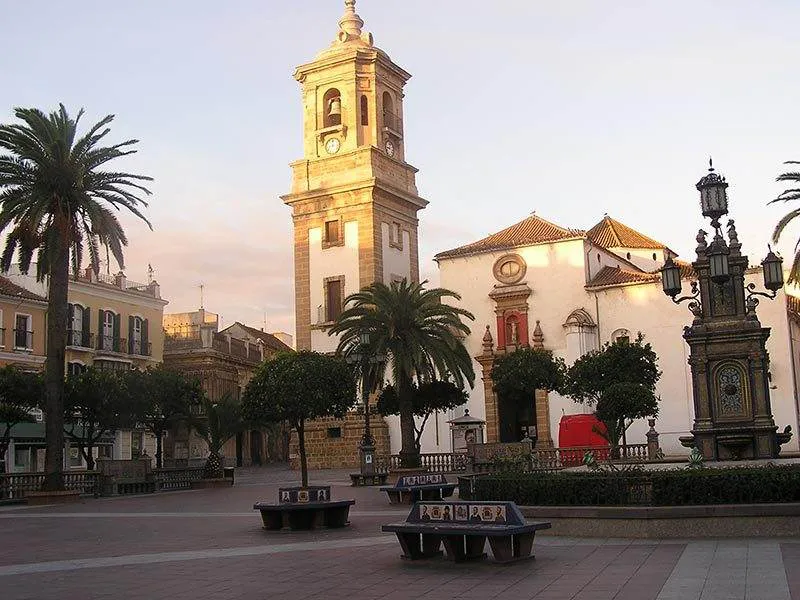
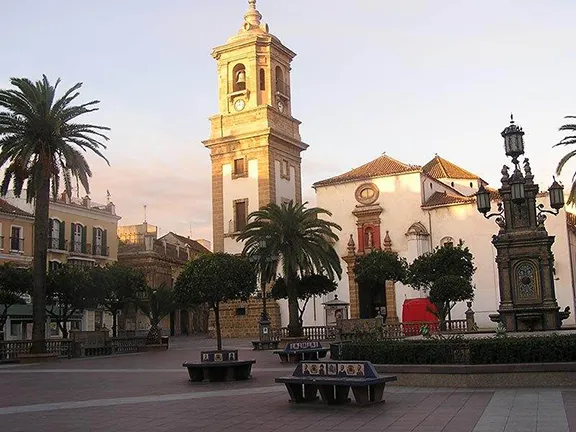
Plaza Algeciras
There seems to be very little written about Algeciras, four lines in the ‘Spain Travel Guide’, and not much anywhere else, which is a pity. It is not just a place to pass on the way to Cadiz or Seville, it does have a certain charm and more of a history than you might think.
High above Algeciras, on the Cabrito pass, is the enigmatic ‘Hand and Ball’ sculpture designed by Todd Slaughter symbolising the meeting point of two continents and cultures. A beacon for all sailors entering or leaving the Mediterranean, it emphasises Spain’s determination to keep the Mediterranean open to all and the Port Authority of Algeciras Bay’s ambitions to keep on developing the area. When the wind howls through The Strait the ball rotates at a maximum speed of 6 revolutions per minute and lends its own eerie cry to that of the gulls above.
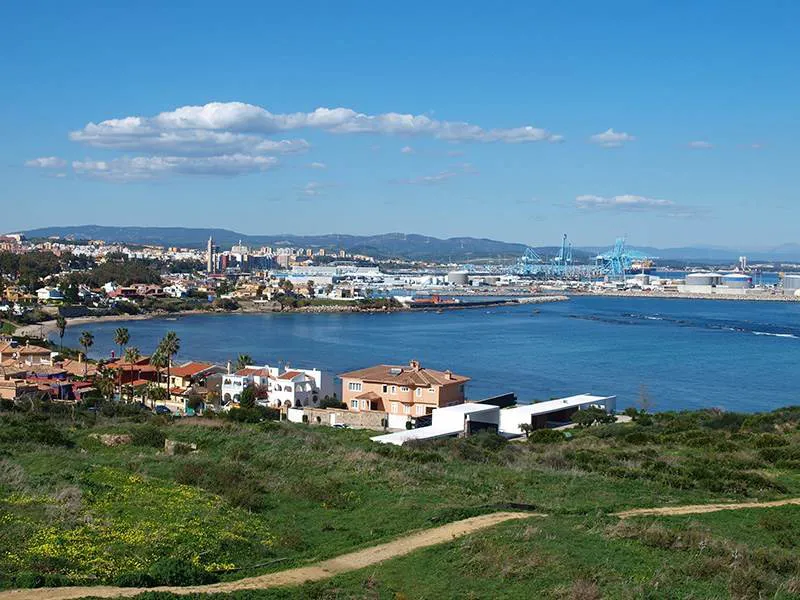
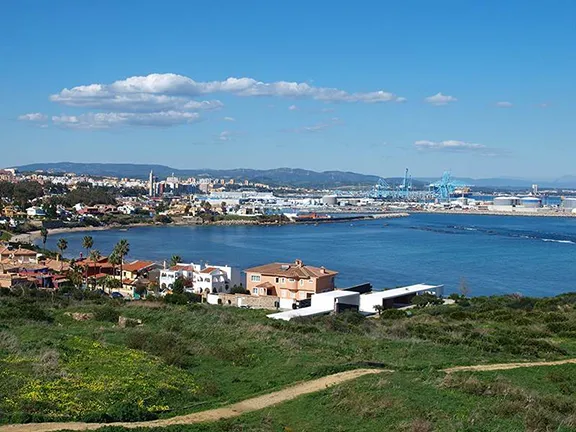
Algeciras Port from Punta de San Garcia
On the far side of the bay stands Gibraltar. When Franco closed its border with Spain the city enjoyed massive investment to create work for those who had until then been employed on The Rock and to break the area’s financial dependence on a foreign power.
Algeciras, the most southerly port in Europe, and one of the busiest in the Mediterranean with a throughput in 2021 of over 107 million tonnes, at a strategic point between the Atlantic and Mediterranean and a natural harbour, has a long history that is largely undocumented which has led to a great deal of confusion.
Some sources mention a nearby Phoenician settlement and port. This is most likely to be that discovered at Cerro del Prado or Carteia la Vieja 1 kilometre upriver from the mouth of the Rio Guadarranque some five kilometres north of the present day city of Algeciras. Some mention a Roman port called Portus Albus situated in a part of the city now called Villa Vieja. This is a possibility since at that time Villa Vieja would have been on the north bank of the Rio Miel, a reasonably sheltered location. However, the Romans also had the town of Carteia, a port in a more sheltered position at the mouth of the Rio Guadarranque, barely five kilometres away. Finally, and as recently as 2001, it has been suggested that a settlement called Julia Transducta occupied the Villa Vieja area. The name Julia Transducta is normally associated with the settlement at Tarifa further down the coast. Whatever its name the settlement was destroyed by the Vandals in the 5th century AD.
Soon after the Moors invaded Spain in 711 they founded a city they called al-Jazirah al-Khadra which is where the modern word, Algeciras, derives. It has the distinction of being the first city to be founded by the Moors in Spain.
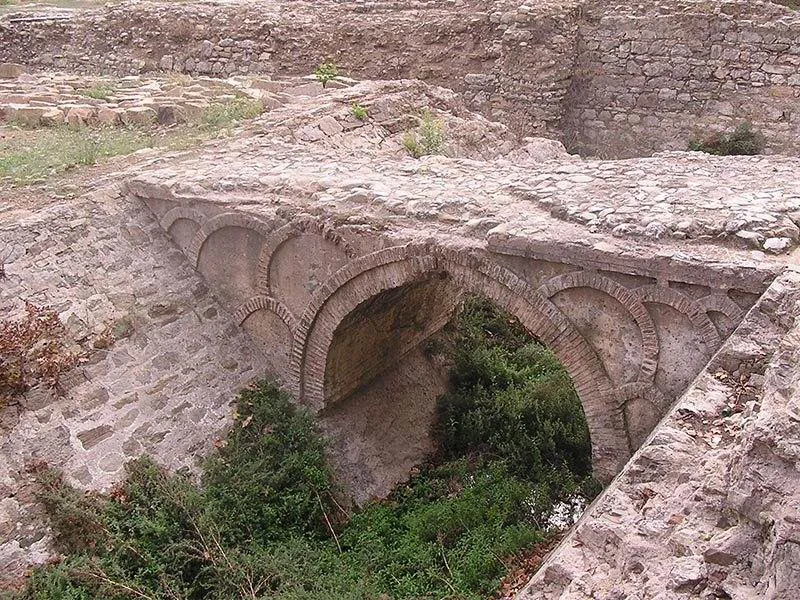
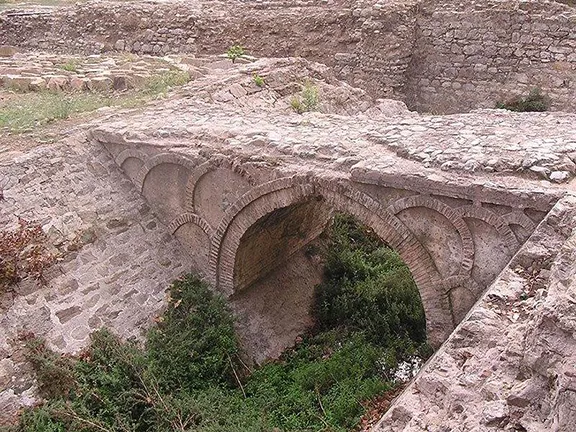
Moorish Bridge Algeciras
In 1998, during reconstruction work in the centre of Algeciras a 100 metre length of fortified wall, complete with moat, four flanking towers, a fine ornate brick bridge and a complicated series of trap courtyards and doors was uncovered. This has been identified as the Puerta del Fonsario o de Gibraltar, the bridge and gate through the northern wall of the city.
In 1278 Alfonso X of Castile and his son Sancho IV laid siege to the city. At the same time they sent a fleet to blockade the harbour. The ensuing battle at sea became known as the Battle of Algeciras and was a defeat for the Christian forces. The siege also resulted in a defeat and was abandoned the following year.
In 1309 Ferdinand IV of Castile laid siege simultaneously to Algeciras and Gibraltar. He was successful at Gibraltar but the strong defences of Algeciras defeated him. Alfonso XI of Castile resumed the siege in 1342 and in 1344 Algeciras finally fell to the Christians. The siege of 1342 to 1344 was one of the first military engagements in Europe where gunpowder was used. The Moors called their cannon ‘thunders’ and they reportedly did great damage to the siege towers and siege trenches used by the Christian forces. Some of the stone cannonball used at the siege, fired from both the bombards and engines similar to Mediaeval catapults are preserved near the Puerta del Fonsario.
Barely 25 years later, in 1369, the Moors under Mohammed V, Sultan of Granada, retook the city after a siege that lasted just 3 days, an event that became known as the Siege of Algeciras of 1369. Ten years later, in 1379, faced with increasing pressure from advancing Christian forces, the sultan decided he could no longer afford to defend the city and he ordered it to be totally destroyed.
That would probably have been the end of Algeciras if, in 1704, Britain had not taken Gibraltar and the old site was repopulated by part of the deposed population.
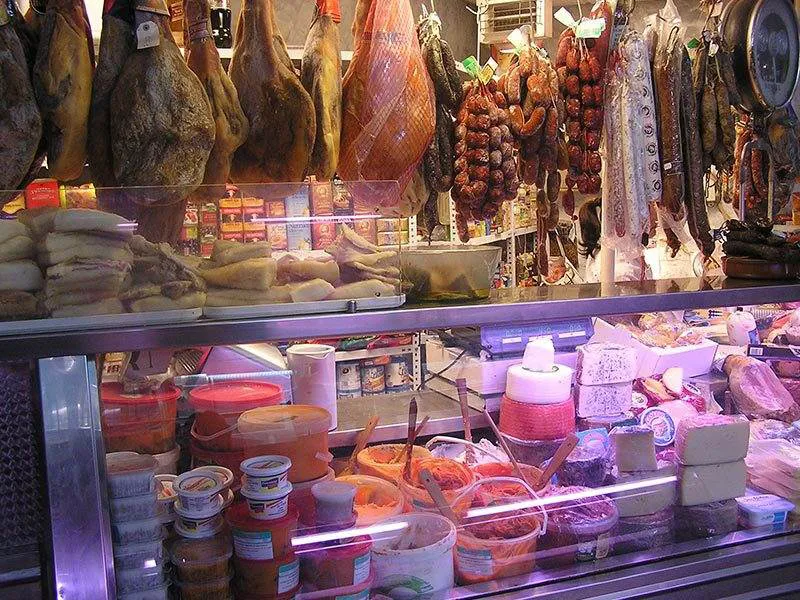
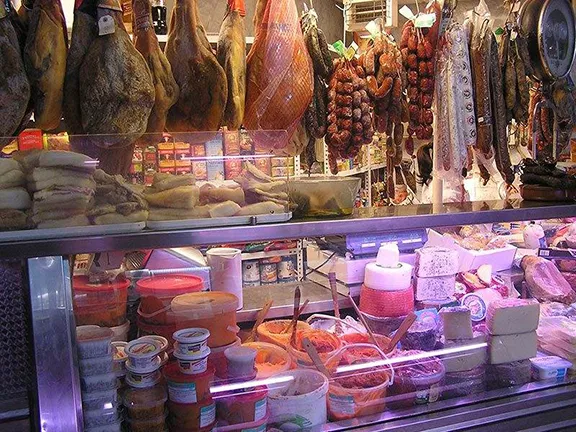
Meat Market Algeciras
It has only been a modern port since the first wooden quay was erected on the Rio de la Miel in 1884. Modest expansion took place, fishing and passenger transport over The Strait being the only independent source of income, until 1964 when the oil refinery and steel mills were built after which Algeciras never looked back.
Catering for thousands of migrant workers from Morocco many of the signs are in Arabic as well as Spanish and many parts of this city could just as easily be in Casablanca or Fez such is their influence. The mint tea served in the many traditional tea shops is as authentic as any you will find over the water. Its working population received another boost in 1969 when the border between Spain and Gibraltar was closed and the Spanish workers on Gibraltar were given the option of being cut off from their families or giving up their jobs.
Algeciras cannot be described as a pretty city, it has few historically interesting buildings, its roads are a nightmare, or at least its drivers are. Behind the commercial centre there is an ugly, untidy urban sprawl, but it has a certain fascination and no shortage of life, in fact a visit can be good fun. Once off the main roads you will find tree lined squares and small parks and any number of restaurants and bars. The easiest way to get into the city is to follow the Puerto signs off the N340 and then the centro cuidad signs, just before the port park in the huge open-air car park.
A visit to the Municipal market, the Mercado de Abastos where EC rules have only just been applied can only be described as an educational experience. The octagonal building itself is a very modern looking creation and was built, surprisingly, in 1935. Unidentifiable lumps of meat in brightly coloured lard are fished out of plastic containers, wrapped in last week’s Sur and carted off in string bags by darkly veiled ladies wearing yellow slippers. Piles of huge mussels, complete with barnacles and seaweed, fresh out of the bay, sell for a couple of euros per kilo. These are delicious by the way but take your own plastic bag, the ink used on newspapers does not enhance their flavour.
Fresh vegetables straight out of the allotments behind the city are piled high. There is no way to be discreet in this place; everybody converses at the tops of their voices, a cacophony of Arabic, French and Spanish. No matter how bad your Spanish the vendors all seem to understand what you want although I am still wondering how I purchased what looks like a bunch of twigs and, more importantly, what I should do with them. Nearby is the fish market where the local catch is sold.
If you are looking for a pair of shoes, or any leather goods come to that, then you must look around Algeciras. Every other shop seems to sell leather items, many from Morocco. By the time the same goods arrive in the UK they will be twice the price. The main shopping streets are behind and parallel to the road you took to get into the city. Leave the car park, cross the road and just go up one of the side streets opposite.
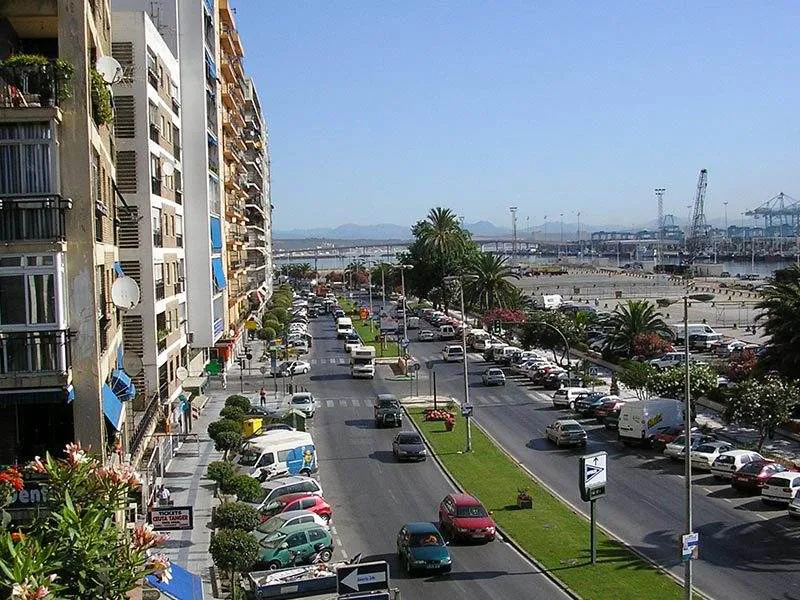
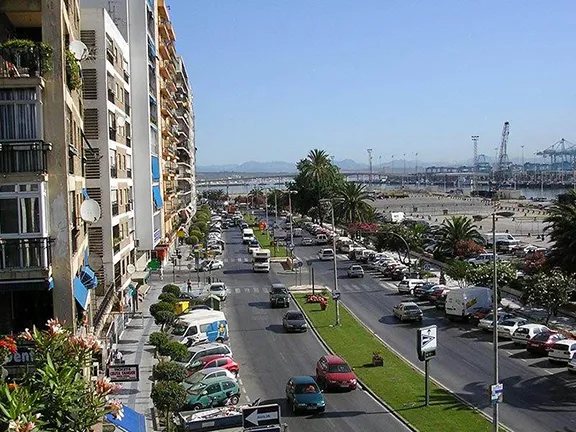
Meat Market Algeciras
Sitting in one of the tea shops overlooking Gibraltar Bay (or Algeciras Bay depending on your nationality), enjoying a glass of mint tea and watching the bustle of the port is perhaps time to reflect on the battle that took place in the bay on the 8th July 1801. This was one of the few times the French, helped by Spanish shore batteries and gunboats, beat the English fleet. Honour was restored on the 12th July when we returned the compliments as the French fleet sailed to Cadiz.
Algeciras has a mixed cosmopolitan population, is in a strategic position relating to Gibraltar, and as from 1939, is a city in a neutral country. Little wonder that it became a centre for espionage and subterfuge during the Second World War.
It is easy to imagine, even today, the long dark overcoats, trilby hats and aura of suspicion when, during the Second World War the Hotel Reina Cristina was almost taken over by German, British and Italian agents, all watching Gibraltar and each other.
Algeciras even, controversially, took an active part in the war or rather turned a blind eye. In June 1940 when Italy entered the Second World War, the Italian tanker ‘Olterra’ was sunk by British commandos at Algeciras. She was recovered in 1942 by an Italian commando unit and moored. The Italians cut an underwater hatch in the hull and used the ship as a base from which to conduct manned torpedo raids on shipping in Gibraltar. A bungalow called Villa Carmela at Puente Mayorga near Algeciras became the headquarters of the specialist underwater unit. The operation was called Ursa Major. Even more for the agents at the Reina Cristina to keep an eye on.
Algeciras is still in its strategic position and as late as 1982, during the Falklands War between Britain and Argentina, the city again became a place of subterfuge and deception. An Argentian plan, codenamed ‘Operation Algeciras’, the Argies were obviously trying for the double bluff, was conceived to attack British ships in Gibraltar using limpet mines and underwater swimmers form their base in Algeciras. The plan was foiled by Spanish police who saw through the cunning code name.